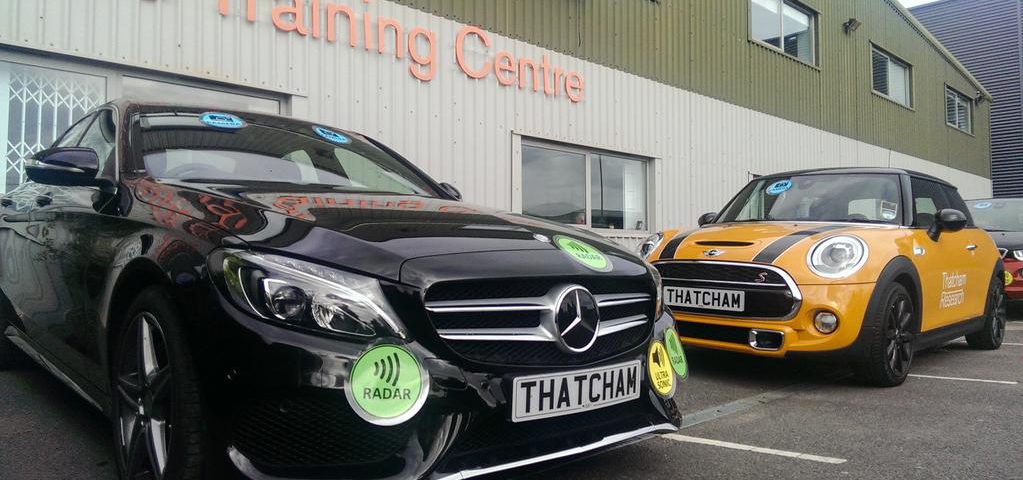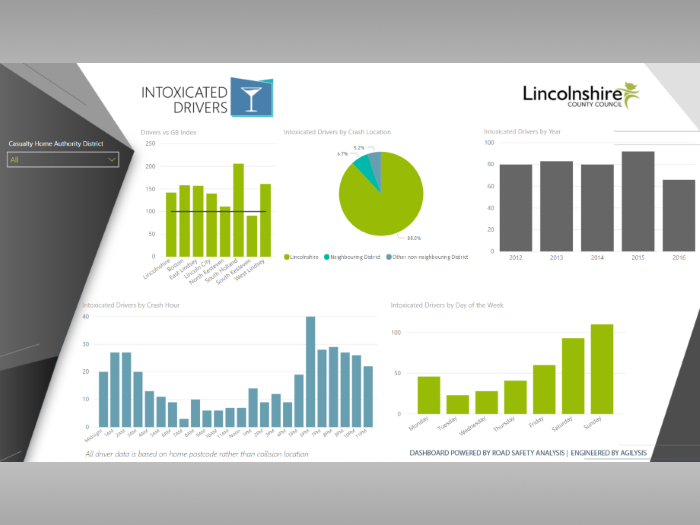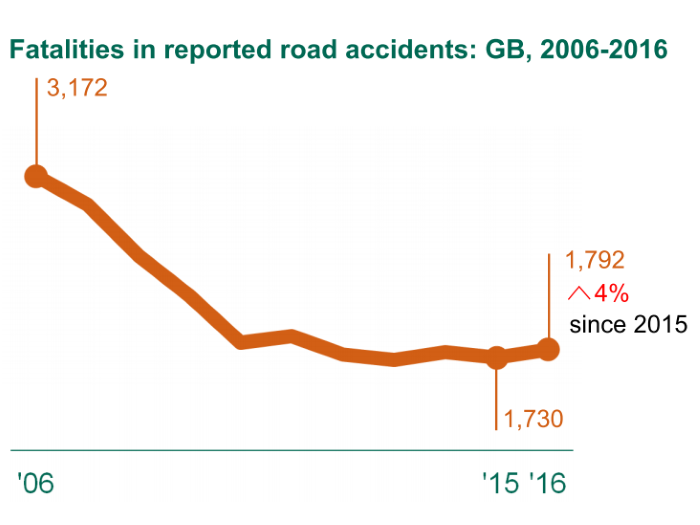
Vision Zero – Why F1 has one and we don’t
October 17, 2014
Are Men Twice as Likely to Speed as Women?
November 13, 2014Autonomous Vehicles - Tomorrow's World?
Richard Owen – RSA Director
Along with over 130 others yesterday I attended the PACTS / Thatcham ‘Driverless Vehicles’ conference for a glimpse into the future. What I discovered is that the future is already here and that the technology is very sophisticated.
The Driverless Car
Firstly though, let me address the issue of the ‘driverless car’. It seems clear to me that the concept of a car that completely drives itself while you sit in the back, reading the newspaper, sleeping, or whatever else it is you would like to do is not going to happen very soon. There are several barriers in the way, the least of which is the technology. Public attitude is perhaps the big one; do people value the technology, will they pay for it, and will they actually use it if it’s present? [Dr Samantha Jamson] (ITS Leeds) considered people’s attitudes to technology purchases in her presentation and it’s entirely possible that there are a lot of people who simply won’t want the technology, let alone be willing to pay for it. As usual the manufacturers are good at selling the benefits as seen in this advert from Hyundai.
Acceptance could be a significant barrier to the driverless car, especially if there is no intention from government to legislate for new technologies in the short-term. You can find many good arguments against the introduction of a fully-autonomous vehicle, especially as it’s wrapped up in all sort of legal issues, so perhaps it’s best if we discard the image of the completely autonomous vehicle and concentrate on the semi-autonomous technologies that will be appearing on vehicles in the decade to come.

Policy
The sub-title of the conference was ‘from technology to policy’ and Transport Minister [Claire Perry] touched on the Department for Transport’s plans for increasing automation. She said that driverless vehicles are an ‘evolution, not revolution’ and pointed to the wide-ranging potential benefits including safety and capacity improvement. Automation is something becoming more commonplace on the rail network with trains and signals talking to each other to achieve the best use of the current infrastructure, and this is something she said could benefit the roads. One of the first areas to be evaluated is the possibility of ‘platooning’ with [feasibility studies already underway] and on-road trials due to commence soon.
Industry led
It is encouraging that the DfT are taking this area seriously, although there have been calls for intervention from government to make autonomous technologies more common in new vehicles. Thatcham themselves [asked for the government] to incentivise autonomous early braking (AEB) to the tune of £500 to ensure 100% take up of this technology by 2025. It was suggested that this could save over 1000 lives in the next decade. It is the vehicle manufacturers and third-party technology companies such as Delphi who are innovating and pushing the boundaries while those in charge of our roads are playing catch-up, waiting to see what’s in the market but not leading development. The debate about whether the DfT is following, not leading in road safety is a valid one but not something that can be considered in any great detail here.
Risk management
For those that aren’t aware it is worth noting that Thatcham was [established by the motor insurance industry in 1969], and the centre’s main aim is to contain or reduce the cost of motor insurance claims whilst maintaining safety standards. It is no surprise therefore that they are keen to push for the adoption of technologies that will reduce the chances of an incident occurring and that they are very much evidence-led. The main job for insurance companies is to evaluate risk and prepare an appropriate premium and they aren’t going to be throwing their weight behind something that doesn’t work.
Similarly EuroNCAP have recognised the value of AEB and now incorporate the assessment of crash avoidance systems in their rating system. They also reward other proven systems such as lane support, attention assist, and blind-spot monitoring.
As was the case with other road safety systems from seatbelts to stability control, it is the industry that leads with legislation following once uptake is already well advanced.
Technology demonstrations
No matter which way you look at it, conferences inevitably involve sitting down listening to people speak whilst being [assaulted by PowerPoint]. Fortunately this conference was very different and we all had the opportunity to see the technology in action. I took the opportunity to have a go at the AEB-equipped Volvo and despite the fact that it’s quite a mature product I had never experienced it in action. Initially too timid on the accelerator I managed to build my confidence for a second run and the system activated exactly as designed. We were informed that the system is only designed to work if the car thinks you are not paying attention so steering wheel movements cancel the operation as it thinks you are taking avoiding action.
Unintended consequences
Now that we had seen the technology in action, and had been suitably impressed, there were questions raised about unintended consequences. There are several obvious scenarios where the technology can be abused.
Reduced driver attention
This is perhaps the most obvious one; if you are cruising on the motorway with the car taking care of longitudinal and lateral movements the temptation to multi-task by reading emails, checking Facebook, or eating will grow. Drivers may think that the vehicle is driving itself but the law (and your insurance company) will say otherwise so you would still be prosecuted for careless driving if you take liberties.
Mischievous pedestrians
I can still remember my days as an irresponsible youth, often taking silly risks when crossing the road, especially when vehicles speeds were low in congested traffic. Risk-taking and dangerous actions increase once alcohol is added to the equation too. It isn’t difficult to imagine a scene where pedestrians become more willing to move in front of a car if they think it is equipped with an AEB system that will stop the vehicle. It could prove to be an effective way of getting over the road - your own personal zebra crossing!
This was one of the scenarios raised by [Saul Jeavons] and the expert panel thought it was unlikely to pose a problem. This was in spite of the experiences of the Volvo autonomous vehicles in Sweden when testing on the public roads. Here they found that if the cars were marked up as autonomous, mischievous drivers would take to opportunity to ‘brake-test’ the cars leading to the removal of all identifying marks.
Cyclist filtering
The problem of cyclists being struck by goods vehicles turning left is a big problem in London with many deaths in recent years. Technology could be implemented that warns drivers of the proximity of a cyclist (although sometimes tricky in complex street environments) and potentially stops them turning. This would undoubtedly be a real boost to cycle safety but would it simply encourage more of this behaviour by cyclists? You could end up with the situation where a stream of cyclists undertake goods vehicles at a junction, all the time the traffic builds behind (thanks to Saul again for this example).
The future
I said at the beginning that the future is already here although it seems like it will take decades for most of the new features to become standard fit. It’s clear that there is a job to be done in educating not only motorists but all road users in how the technology works and how to use it properly.
As was repeated many times, the vast majority of crashes occur due to human error and removing the human from the system would reduce deaths on the roads. At what point though do drivers become passengers and how can we make drivers aware that they are ultimately responsible for the vehicle they control?
Technology is all well and good but education to provide information and training will always be required.










